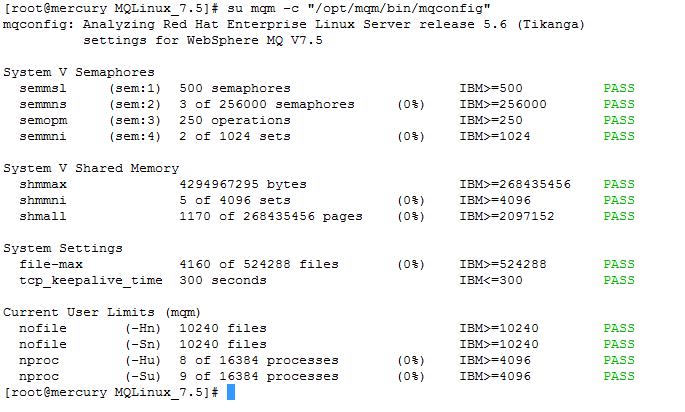Steps to Install MQ 7.5 on Linux
1) Ensure that all the prerequisites are validated and checked before downloading and installing it
2) Recommended to create two partitions for the Installation and the Data filesystem ( ie /opt/mqm and /var/mqm)
3) Its Important to check/modify the kernal parameters for the Unix using the mqconfig.sh. I have created a Post for this . You can refer to the Link HERE
The current mqconfig.sh output before installation ( i have done the necessary changes in linux kernal parameters)
All are PASSED
NOTE: These values may differ based on large setup , load etc
4) Download the MQ setup from the Passport Advantage
5) I have saved the setup WS_MQ_LINUX_ON_X86_32B_V7.5.0.2.tar in /IBMSoftware/MQLinux_7.5
![]()
6) Extract the tar file in the same location using tar -xvf command
![]()
7) The tar file consists of the rpms for MQ and other supporting packages for it
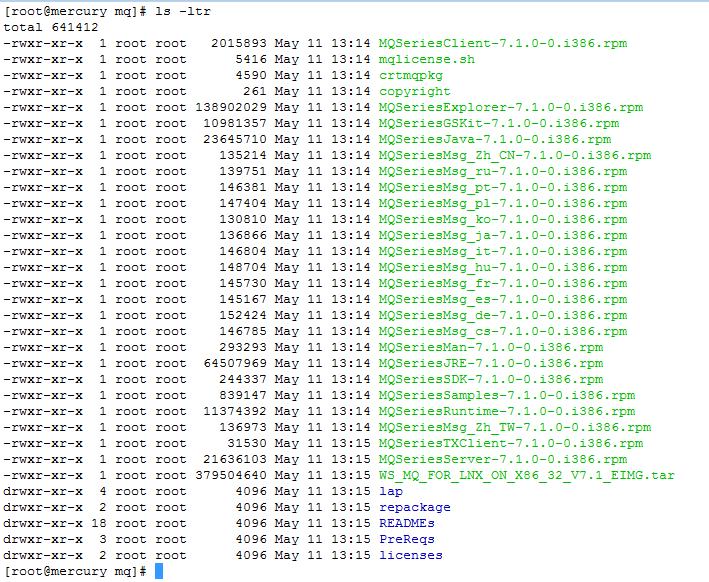
8) Check if MQ is already installed using rpm command : rpm -qa | grep -i mq
![]()
9) Login as root or any super user
a) Create the mqm user and mqm groups using the Unix commands
#groupadd mqm
#useradd -g mqm mqm
b) Execute the “ ./mqlicense.sh” script to accept the License .
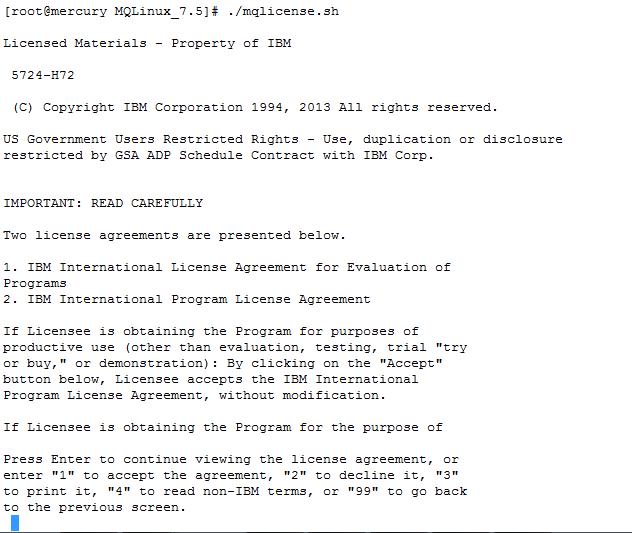
Press Enter , Enter to go to the last of the License Agreement
Enter “ 1” to accept the license

NOTE : If you don’t accept the License and try to install the rpms you will receive the below error
Product cannot be installed until the license agreement has been accepted
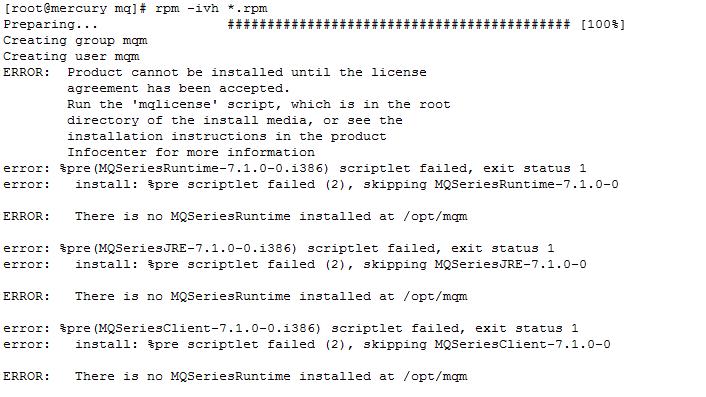
10) Run the rpm command to install the MQ rpms
ie rpm -ivh < rpm package name >;
You can simply run “ rpm -ivh *.rpm” from the folder where the MQsetup Tar was extracted . In my case its /IBMSoftware/MQLinux_7.5
a) “rpm -ivh *.rpm” will take care of the dependencies between the rpms .
Alternatively you could run individual rpms
[root@mercury MQLinux_7.5]# rpm -ivh MQSeriesServer-7.5.0-2.i386.rpm
b) Also below are the sequence of the dependencies which needs to be followed if individually installing the rpms
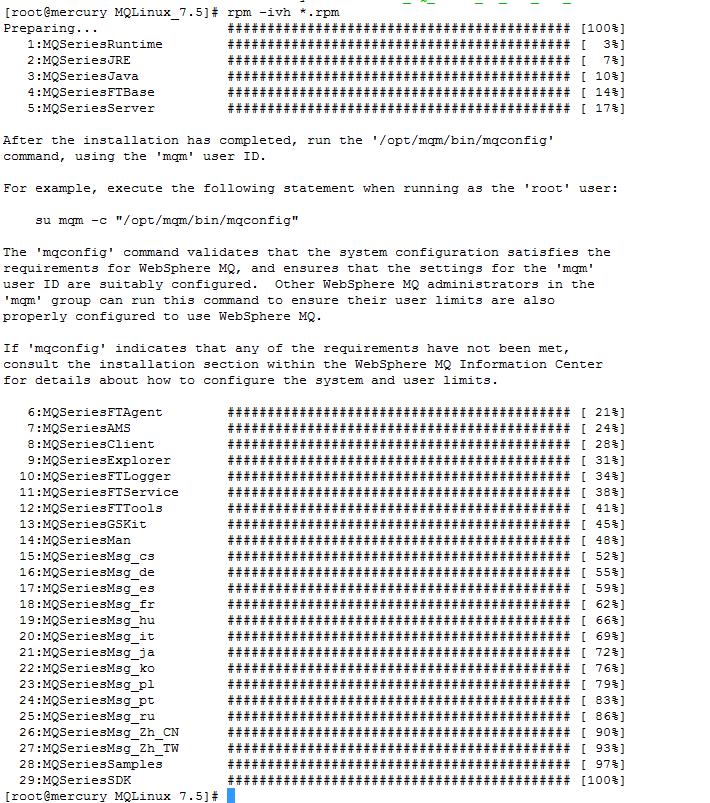
NOTE: Running these rpms will create the user mqm and the group mqm with user mqm as it member if the users are not allready created
11) Check if MQ is installed properly . you can use rpm -qa | grep -i MQ to check the rpms installed

a) Use rpm -qi MQSeriesServer-7.5.0-2 to get more information on the specific package like versions , path of installation , license etc.

12) Navigate to the locations /opt/mqm and /var/mqm and validate the permissions . It should be mqm
13) Check the users and group mqm creation


14) Switch user to mqm using su – mqm
a) # su – mqm
b) Load the environment variable for MQ using setmqenv
$. /opt/mqm/bin/setmqenv

NOTE: a) You can Ignore the message AMQ8588
b) Also you can add “. /opt/mqm/bin/setmqenv ” in the .bash_profile file of the user to load the Env Variables every time automatically when logging in.
15 ) Validate the versions of MQ execute “dspmqver” as mqm user
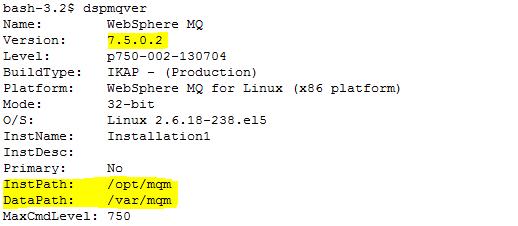
Here its 7.5.0.2 with “Installation Path” as /opt/mqm and “Data Path” as /var/mqm
16 ) You could create some test Queue Managers to validate the installation too ( i will write a separate post for the Queue Manager creation )
This is how we install the MQ on a Linux Server .
